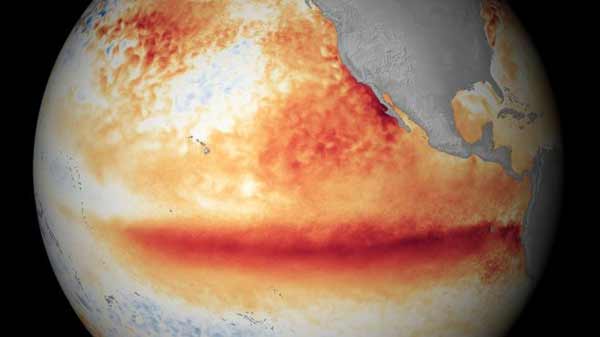
Geneve, Switzerland (BBN)-The El Nino weather phenomenon has reached its peak according to scientists and is set to decline over the next few months.
Researchers say there is a 50:50 chance that it will be replaced by a La Nina event before the end of this summer, reports BBC.
La Nina which involves a cooling of the Pacific Ocean, usually brings wetter conditions to Asia, Africa and Latin America.
These events can typically last twice as long as an El Nino.
WARMEST JANUARY ON RECORD
While the World Meteorological Organisation (WMO) reports that the El Nino event has reached its apex, it is still having a significant influence on the global climate.
In combination with human induced warming, global temperatures in January were the hottest for the month since records began in 1880.
The data also showed the biggest divergence yet seen from the long term record.
"In meteorological terms, this El Niño is now in decline. But we cannot lower our guard as it is still quite strong and in humanitarian and economic terms, its impacts will continue for many months to come," said Petteri Taalas from the WMO.
"Parts of South America and East Africa are still recovering from torrential rains and flooding. The economic and human toll from drought - which by its nature is a slowly developing disaster - is becoming increasingly apparent in southern and the Horn of Africa, central America and a number of other regions," he said.
While the El Nino did bring some relief to drought-hit California, there have been concerns that it has tapered off in recent weeks.
But in the wake of El Nino, experts believe there is a good chance that a La Niña will arrive later this year .
"Most models indicate that El Niño will weaken, with a transition to neutral during the late spring or early summer 2016," according to the US Climate Prediction Centre.
"Thereafter, the chance of La Nina conditions increases into the autumn," they concluded.
According to the US National Oceanic and Atmospheric Administration (NOAA), there is a 50 per cent chance of a La Nina this summer.
They say that there is an 80 per cent chance of it happening by the end of this year.
Not every weather centre is on the same page when it comes to predicting the appearance of the event that's also termed El Viejo (the old one) or the Anti-El Nino .
Australia's Bureau of Meteorology says that based on 26 El Niño events since 1900, around half have been followed by a neutral year while 40 per cent have been followed by La Nina.
They argue that international climate models right now suggest that there won't be a follow-on La Nina this year.
If forecaster are a little uncertain of the arrive of a La Nina, they are all remaining tight-lipped on the more important question of how powerful it is likely to be.
La Nina often improves fishing conditions in the Pacific Ocean off South America, thanks to the upwelling of cold, nutrient-rich waters.
It is also associated with heavier monsoons in South-East Asia, but it has also caused significant flooding in Australia in the recent past.
Another outstanding question is the impact of climate change on La Nina.
A study last year suggested that extreme events were much more likely in a warming world.
BBN/SK/AD